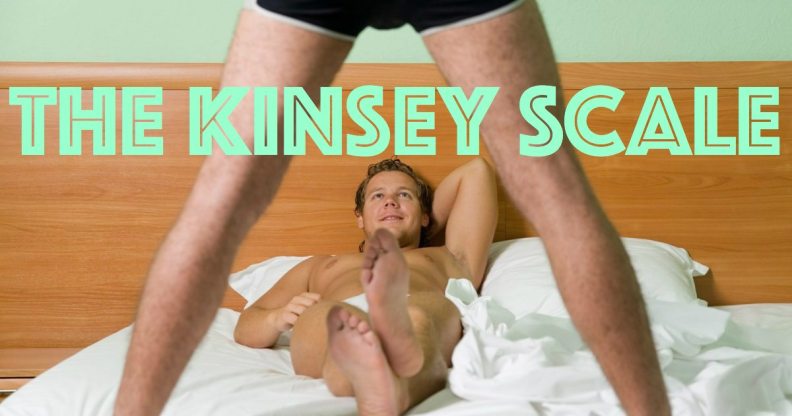What is the Kinsey Scale? Here’s how to find out how you rank on the sexuality scale

The Kinsey Scale took a pioneering approach to categorising human sexuality.
The Kinsey Scale – aka the Heterosexual–Homosexual Rating Scale – was developed by Dr Alfred Kinsey in 1948 and is used to measure human sexuality.
Have you ever wondered just how gay you are? Do you fancy women, but had a crush on one bloke a few years ago? Has your head only ever been turned by people of the same sex as you? Well, the Kinsey Scale determines (ish) whether a person is gay, straight, or somewhere in between.
How was the Kinsey Scale created?
Between 1938 and 1956, Dr Alfred Kinsey, Dr Wardell Pomeroy, Dr Clyde Martin, and their research team interviewed over 17,000 people about their sexual histories.
Their research showed that sexual behaviour, thoughts and feelings towards people of the same or opposite sex were not always consistent across time and that people did not fit into exclusively heterosexual or homosexual categories.
Instead of assigning people to three categories – heterosexual, bisexual and homosexual – the team developed a seven-point scale, which ranges from 0 to 6, with the additional category of X.
Understanding the Kinsey Scale
As you can see, those who sit at 0 or 6 on the scale reported exclusively homosexual or exclusively heterosexual attraction. People at X reported “no socio-sexual contacts or reactions”.
However, in The Psychology of Human Sexuality, scholar Justin J Lehmiller wrote: “The Kinsey X classification emphasized a lack of sexual behaviour, whereas the modern definition of asexuality emphasizes a lack of sexual attraction. As such, the Kinsey Scale may not be sufficient for accurate classification of asexuality.”
Related: What is asexuality? What does it mean to be asexual?
Then there are those at 1, 2, 3, 4, and 5 on the scale – all of whom reported varying levels of attraction or sexual activity with both sexes. Some are mostly attracted to people of the same sex but have the odd thought about the opposite sex, and vice versa. Some are mostly into the opposite sex but also really enjoy getting it on with the same sex.
Because… guess what? Sexuality is fluid for quite a few of us.
How can I take the Kinsey test?
Erm, you can’t – because it doesn’t actually exist. It’s called the Kinsey Scale, not the Kinsey Test, and any tests on the web aren’t actually official. You can read this article, though, and decide for yourself. Or you can travel back in time to the late 1940s and hang around Kinsey et al in the hope that they use you as a subject.
For a bit of fun only, you can always take a picture-based test or question-based quiz to find out more about your sexuality.
The Kinsey Reports
The Kinsey Scale started out as the Kinsey Reports, first published in Sexual Behaviour in the Human Male (1948) and Sexual Behaviour in the Human Female (1953).
The Kinsey Reports sold almost 1 million copies combined and were translated into 13 languages.
They’re also considered to be among the most successful and influential scientific books of the 20th century and are credited with changing people’s perception of sexuality – although they’re not comprehensive…
Because there are other sexual identities…
Yep, PinkNews reader, there are many other possible sexual identities (but you already knew that), and the Kinsey Scale does not address them all.
Kinsey is just one of over 200 scales to measure sexuality. For example, Fritz Klein’s Klein Sexual Orientation Grid includes factors such as how orientation can change throughout a person’s lifetime, as well as emotional and social orientation. Some scales rate homosexual behaviours from 1 to 14, and some have measures for gender, masculinity, femininity and transsexualism.
The Kinsey Scale – although an interesting look at sexual orientation – is not comprehensive enough to cover all sexual identity issues. Indeed, other sexologists suggest that sexual orientation is just one element of sexual identity.
Yeah, what about biological sex and gender identity? We’ll save that for another day while we take fake Kinsey Tests online.

